Last updated: September 26, 2020
Article
Tortillas de harina (Flour Tortillas)
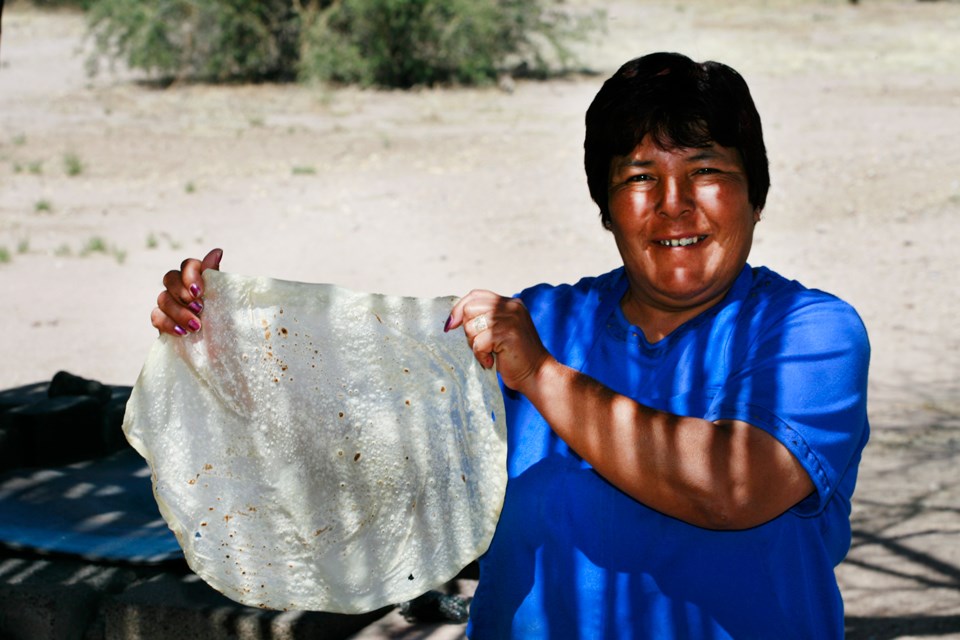
Tortilla Making and History
What exactly are tortillas? How big are they? Of what are they made? How should they be made? These are questions that can spark much discussion and debate, even among tortilla makers themselves. The important thing is that none of this really matters - they are GOOD, as you will be able to assert for yourself when you eat one made fresh by a Tumacácori demonstrator or in your own kitchen.
The Aztecs fried flat cakes of cornmeal on a hot plate or stone. The Spanish called them “tortillas” because they resembled the flat, round omelets known as tortillas, commonly eaten in Spain.
Wheat, brought from Europe by Spanish settlers and missionaries, became a popular replacement for corn in the Pimería Alta. The resulting flour tortilla is a unique invention resulting from this culinary ingenuity.
Tortillas de harina, made from wheat flour, are a staple in northern Mexico and the Santa Cruz Valley of southern Arizona. They include very few ingredients: flour, water, salt and a little bit of lard or shortening. They are frequently cooked on a metal plate over an open mesquite fire -- all of which is traditional to Tumacácori.

Tortillas Sonorenses
Traditional Sonoran tortillas are soft, chewy, and tissue-paper thin. The most traditional shaping is done without any tools at all, by tossing the dough from hand to hand and then from forearm to forearm. A finished tortilla sonorense may be 18 inches in diameter and only a few milimeters thick.
- Duration:
- 5 minutes, 10 seconds
The humble flour tortilla is actually a unique invention, brought about by sharing and innovation in missions and other communities of New Spain. It became embedded in Hispanic culture and its traditions continue today. Ranger Georgina Jacquez demonstrates how to create an authentic flour tortilla.
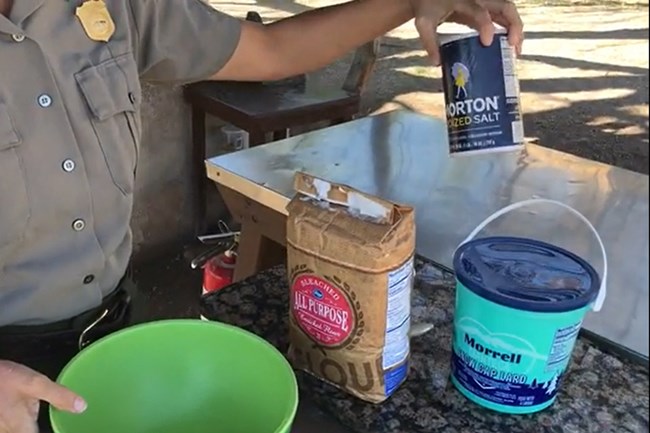
Ingredients
2 lb flour
1/2 lb lard (or vegetable shortening)
1 tsp salt
2-3 c warm water
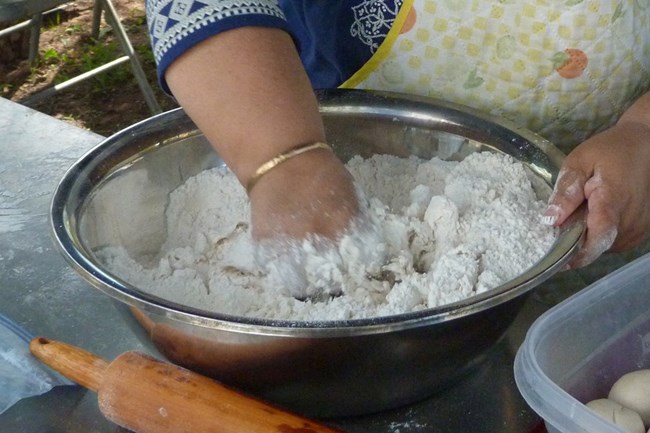
Step 1: Mix
Pour flour into a bowl. Mix in salt. Incorporate the lard into flour until a crumbly flour consistency is reached. Pour a cup of the warm water into the bowl. Begin kneading the dough with your hands.
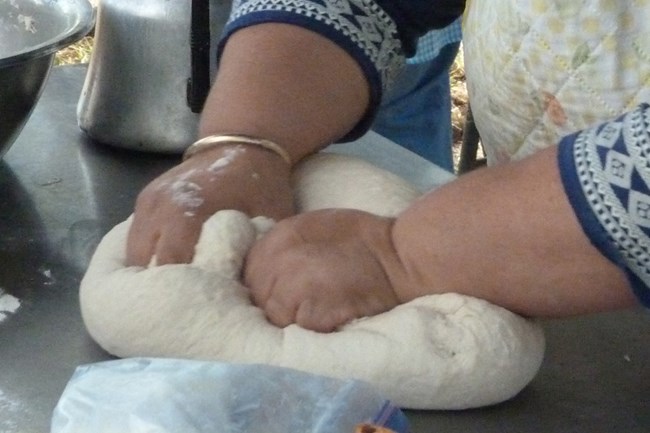
Step 2: Knead
Gradually add more water to the flour/dough mixture working the water into the dough until the dough is no longer sticky. If the dough is too sticky then add a small amount of flour. Work the dough for a couple more minutes. The dough should be smooth and pliable with no cracks. Let the dough sit in a bowl covered with a clean cloth or towel for 20 minutes.

Step 3: Make Balls
Pinch off balls of dough, a bit bigger than a golf ball. Roll all dough balls until they are round, sprinkle lightly with flour, and place in a covered container. Allow them to rest about 10 minutes.
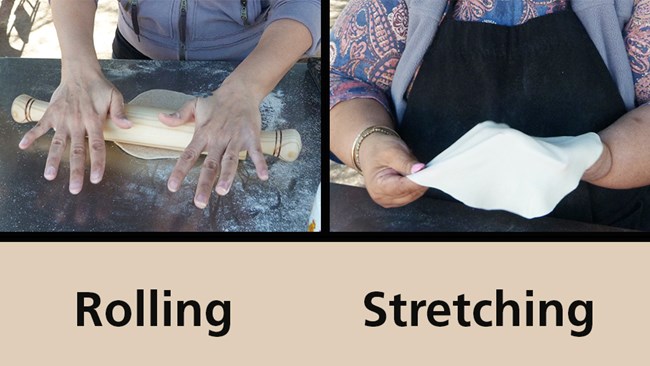
Step 4: Shape
Option A (the rolling method): Lightly flour the counter to prevent the tortillas from sticking. Using a rolling pin, roll the tortilla away from and toward you once. Lift the tortilla, turn 90 degrees, and repeat. Turning the tortilla 90 degrees keeps it from sticking to the counter, sprinkle more flour on the rolling surface as needed. After 4-6 turns, you should have a tortilla about 7-8 inches across.
Option B (the stretching method): Flatten the ball into a small disc. Pat it back and forth between your hands. Use your fingers on the underside of the tortilla to gently stretch the dough from the center outward. It should be elastic and thin.
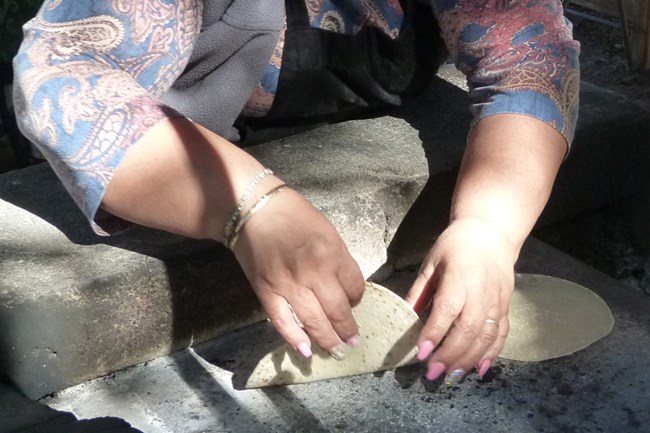
Step 5: Cook
Preheat a pancake griddle or an iron skillet on medium to medium high heat but don’t let the pan get too hot. Place tortilla on the griddle; flip several times until it has golden brown spots on it. It should still be soft and flexible, not crispy. Remove from the griddle and stack the tortillas in a bowl under a towel to keep warm.

Step 6: Serve (or Store)
Serve warm or cool the tortilla by removing them from inside the towel. As the tortillas cool they will need to be rotated and flipped to keep them from sticking to each other. Place the tortillas in a ziplock bag and refrigerate for later use.
